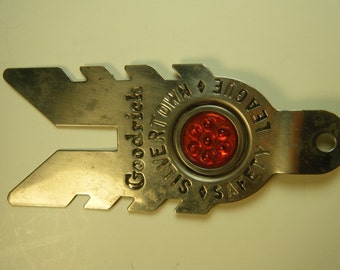

Plaintiff Smith likewise transferred to Pro-Tread and also elected to receive Firestone pension benefits of $645.65 per month, commencing on the day he was first employed by Pro-Tread at the same rate, same position and same location.

He made two written requests for Firestone severance benefits (Bowman Dep.
Bridgestone firestone employee handbook plus#
Plaintiff Bowman transferred to Pro-Tread and continued to earn the same salary that he earned at Firestone moreover, because of his age and years of service he retired from Firestone effective J(sale date June 30, 1986) and started receiving $1,008.33 per month plus comprehensive medical insurance benefits which were to continue for the remainder of his life. §§ 1021-10, alleging non-disclosure of the benefit plans to the plaintiffs as mandated by the statute, and interference with protected rights.įollowing the sale to Pro-Tread, all 275 retread division employees were transferred to Pro-Tread and plaintiffs admitted that no one that they could recall was allowed to "bump" or bid into a different, available Firestone position. § 1132(a) (1) (B), ERISA, as it relates to denial of termination or severance pay to plaintiffs.Ĭount IV is also an ERISA claim under 29 U.S.C.
Bridgestone firestone employee handbook code#
In their complaint, the plaintiffs advance several claims:Ĭount I is a common law claim of breach of implied contract and promissory estoppel, based on the alleged promises and assurances of termination pay and back pay contained in various versions and editions of salaried employee handbooks (Firestone Handbooks) and job posting policies.Ĭount II alleges a violation of Ohio Revised Code § 4101.17 (the OADEA), contending that the defendant's wide use of Age Data Forms, coupled with the fact that the plaintiffs were not transferred, bumped or downgraded to other Firestone jobs for which they were qualified resulted in age discrimination in violation of the OADEA.Ĭount III is a claim under 29 U.S.C. Like Smith, Dunn was designated as a "field" level salaried employee. Dunn (Dunn) local retread plant manager for Firestone's production facility located in Charlotte, North Carolina and who had held that job since 1985. Smith was classified as "field" level salaried employee. Smith (Smith), retread products plant manager for Firestone's production facility in Nashville, Tennessee. Bowman (Bowman), senior analyst of budgeting and planning for the Firestone Retread Products Division, located in Akron, classified as an "Akron other than Field Salaried Employee," grade level "A 12" a Firestone employee since 1957.ĭonovan C.

Thus, the Retread division employees did not miss a day of work.Īgainst this backdrop, the plaintiffs are:Ĭlyde J. Under the terms of the divestiture, the purchaser, Pro-Tread, immediately employed all of defendant's Retread Division employees in the same location, with the same rate of pay, performing the same essential functions. At one time the Retread Division boasted over 200 plants, but that number dwindled to 25 and registered losses in the millions (in 1984 the Retread Division had a loss of $1,934,601.00, and in 1985 $1,558,450.00). This action grew out of the Jsale of the Firestone Retread Division to *495 the Pro-Tread Corporation (Pro-Tread) from Michigan. Firestone embarked on a course of reorganization that included early retirement incentives to the workforce reduction in work force, i.e., terminations divestiture of unprofitable concerns and the culmination of this metamorphosisFirestone being "bought" by the Japanese competitor, Bridgestone, Inc. Profitability declined, sales dwindled and management acted to save the saveable and set a new course and direction for the company. In the course of time, Firestone, a local industrial giant with its flagship post in the rubber capital, Akron, was caught up by the then prevailing economic forces. The case at bar is part of the saga of the decline of a great American industry and the resultant price paid by its employees. The parties have supported their motion with affidavits, depositions and attached case law. The plaintiffs have filed their opposition to summary judgment and defendant its reply.

and the second is defendant's motion for summary judgment relating to plaintiffs' pendent causes of action. The first is a motion for summary judgment on plaintiffs' cause of action under the Employee Retirement Income Security Act of 1974 (ERISA), 29 U.S.C. Pending before the court are motions filed by defendant, The Firestone Tire & Rubber Co.'s (Firestone). Holcomb, Millisor & Nobil, Akron, Ohio, for defendant. The FIRESTONE TIRE & RUBBER COMPANY, Defendant.


 0 kommentar(er)
0 kommentar(er)
